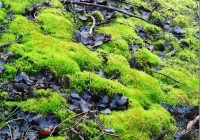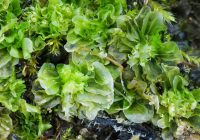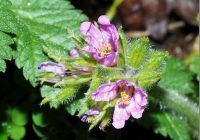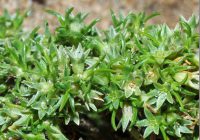Dr Phil Smith’s Wildlife Notes
December 2018
After months of dry weather, December returned to something like normality, measurable rain falling on 15 days, including the wettest day since August on 3rd. This helped the severely depleted water-table, my measuring point in the Devil’s Hole blowout showing a rise of 13 cm by the month’s end. Despite this, most of our dune-slacks remained dry. It was also a relatively warm month with hardly any frost.
The moist, mild conditions were perfect for bryophytes (mosses and liverworts), which rapidly recovered from brown, dried-up remnants to brilliant emerald-green patches on both the open dunes and the limbs of older broad-leaved trees. Josh Styles and I continued our study of the critically endangered Large Hook-moss, visiting the large slack south of the Ainsdale Discovery Centre where Des Callaghan reported this species in 2010. Sure enough, it was still there, with several colonies, especially on a lightly-trampled path through the slack where the vegetation was shorter. We recorded quadrats and took soil samples to describe the habitat.
Although I still struggle to identify this difficult group of “lower” plants, I am getting to the stage where I can spot something different from the norm. A moss on the bark of a White Willow near the Devil’s Hole was new to me, so I sent a small sample to the regional recorder, John Lowell. The news was good – just as I thought, it was the Small Hairy Screw-moss (Syntrichia laevipila), not previously recorded on the Sefton Coast. This was the sixth new bryophyte for the coast that Josh and I have found since 2017, raising the grand total to 231 species. Other “good” mosses found during the month, included Mamillate Plait-moss at Falklands Way, only the second record for the coast, and Thick-point Grimmia, that Josh spotted on a garden wall at Edenhurst Drive; he found the first for Sefton at Freshfield Dune Heath in 2017. Josh joined me to explore the Lifeboat Road area of dunes and woodland where we re-found most of the uncommon bryophytes noted earlier in the year. These included a small colony of Rustwort on a rotting log and enormous patches of the spectacular Big Shaggy-moss. I also visited one of the newly discovered sites for Petalwort in the frontal dunes north of Sands Lake, finding several healthy patches of this rare liverwort that has benefited from scrub clearance.
While higher plants do not usually produce flowers in mid-winter, there are exceptions. I was surprised, for example, to see the familiar Hogweed in full flower at Sands Lake, Ainsdale, on 28th. Earlier in the month, in response to a message from Josh, I stopped off at Duke Street Park, Formby, to re-visit the colony of Musk Stork’s-bill found by Mary Dean in 2014. Remarkably, instead of just a handful, there are now hundreds of plants occupying several square metres. There were even a few bright-pink flowers showing. Once cultivated as a pot and medicinal herb, apart from Mary’s 2014 record, this Lancashire rarity hadn’t been seen in Sefton since 1954.
A few days later, another excited phone call from Josh alerted me to an even more spectacular plant find. This time it concerned the Annual Knawel, a plant that has declined so much that it is Red-listed as ‘Endangered’ in both the UK and England. Eight years ago, I found a small colony on Birkdale Common, the first record for the Sefton Coast since 1914 and the only extant site in the region. However, Josh reckoned that instead of low hundreds of plants there were now thousands. Patricia Lockwood joined us to survey the plant and its habitat on what was one of the coldest days in December, with a freezing wind. However, it was worth the hypothermia as we estimated 10,000-20,000 plants of Annual Knawel, many with typical tiny yellowish-green flowers. We speculated that this enormous increase may have been the result of the summer drought that restricted the growth of competitive grasses, allowing this low-growing plant to prosper. It needs dry, thinly vegetated, sandy, low fertility soils. When the Botanical Society for Britain and Ireland surveyed the Annual Knawel a few years ago for its Threatened Plants Project only two sites in Britain supported “thousands” of plants. Also supporting other unusual plants, Birkdale Common is therefore an important botanical site and yet it is not designated for its wildlife interest.
With a lot of time spent on plant surveys, birds took a back seat during December. Nevertheless, I was pleased to catch up again with the Mediterranean Gull at Southport Marine Lake. A graceful male Goosander was a regular visitor on Sands Lake, together with up to 60 Tufted Ducks. The big slack at Cabin Hill was largely dry but still produced seven Common Snipe and a Jack Snipe.
Finally, the “Buckthorn Bashers” met twice, first to clear another of the frontal slacks north of Sands Lake and then, with Gems in the Dunes, to burn a large amount of previously cut material.




